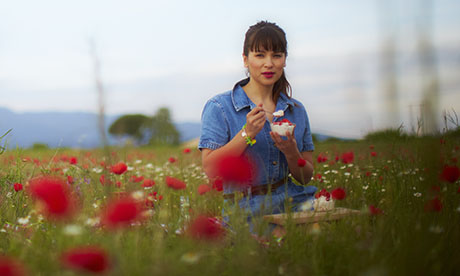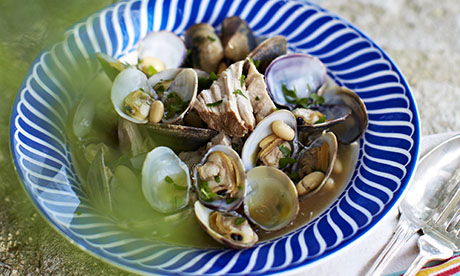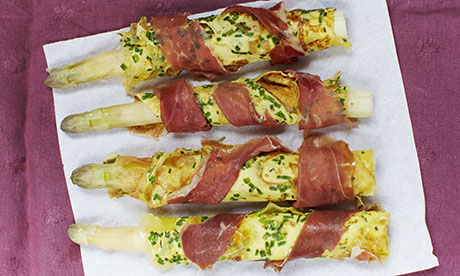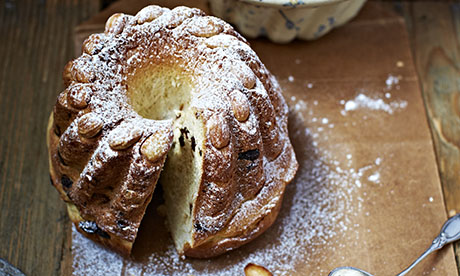
Rachel Khoo talks about her latest French food adventure around regional France. And shares three delicious recipes
Rachel Khoo is an English chef best known for her TV series and cookbook about living, eating and cooking in Paris called The Little Paris Kitchen. Using only the tiny cooker in her equally tiny apartment in the French capital, she presented French dishes in a fun and quirky manner.
A year on she has a new book, My Little French Kitchen, where she ventured into regional France looking for dishes that revealed the nature of the French countryside. She spoke to Peter Moore about how she got started. And the amazing variety of food available throughout France.
Your dad is Chinese Malaysian. Your mum is Austrian. Did that lead to exotic meal times when you were growing up or was it just your standard British, meat and two veg?
No it wasn’t standard! Where my best friend next door was having chicken nuggets and chips, we’d be having stir fries and curries. During the week it would be Asian, then there’d be the odd Snitzel, which was a real treat. But on Sundays we’d always have a Sunday roast.
When did you get into cooking?
I did a lot of baking with my mum when I was little. And when I visited my relatives in Austria, my grandma, I’d watch her making strudel. I think I got that interest in baking from when I was little. And the cooking thing came when I was at uni, having friends over for dinner. Then I did a few classes in the evening.
Cooking wasn’t your first career choice. You studied fashion at St Martins College.
I went to art school and did the fashion marketing PR thing because I couldn’t get a paid job in food designing. After I graduated I wanted to do food styling. But you have to work your way up. And you work your way up doing jobs for free at the beginning. Living in London was expensive, my parents aren’t rich, so I couldn’t afford to do it. So I ended up in fashion PR and marketing.
After two years, however, I decided that I really wanted to get back into food styling so I decided I should do a course – a patisserie course. I thought it was more technical and there’s a real craftsmanship. With cooking there’s craftsmanship but you can adlib more. Patisserie you have to be very precise. You add too much butter and your cake starts to melt. So that’s why I picked patisserie.
And that led you to Paris?
Yeah. I could have done the course in London, but I thought 'Why not Paris?' I could discover another culture, learn another language. So that’s how I ended up in Paris.
It certainly sounds idyllic – the Parisian apartment, wandering through fresh produce markets, then cooking a meal. Is it really like that?
(Laughs) They didn’t film the many years of hard work where I had five different jobs from looking after kids, teaching English, working in a department store, working in a cookery book store, anything to stay in Paris.
Or the way I built up my contacts in the food styling and the food world by doing jobs for free. And in Paris that is really, really hard. I’d written two cookbooks in France before the The Little Paris Kitchen. And the way I got those cookbook deals was because I’d started working on somebody else’s cookbook and the editor saw my work. I had previously contacted that publisher. I’d said ‘I’m a food stylist, I’ve had this experience’ and they just ignored me because in France, if they don’t know who you are or where you’re from, you have to be recommended, otherwise they won’t work with you.
In contrast, I got The Little Paris Kitchen deal in the UK by emailing the publisher and had a meeting.
Let’s talk about your new book, My Little French Kitchen. Your first book was set in Paris, in your apartment and a little cooker and being able to cook these amazing meals on that. This time you went forth into France to expand your culinary horizons. How did you decide where to go?
It was quite daunting. The more places I visited the more I realised that you could write ten cookbooks about France. Luckily, I knew people in certain areas. In Alsace, I had a friend and she set me up with cooking with a French grandma. I wanted to get some of the really local specialities. Sometimes when you visit somewhere you just get the top flavour, the touristy flavour and I really wanted to delve in.
So I’d ring up farmers, I’d ring up restaurants and say ‘Can I come behind the scenes? Can I have a chat with you?’ just to get some inspiration and a flavour for that region. All the travel, all the research was really helpful for me collecting and writing recipes.
Is food a good way of getting under the skin of France? To get below that initial level that most people skim across.
Totally. I’d already experienced that in Paris. A good way of starting a conversation was to talk to people about food. Everybody has a point of view about food. Certainly the French do.
Some of the farmers I met are really struggling and they were just so happy that somebody wanted to hear their story and pass on the knowledge and somebody who was interested. Especially somebody from a younger generation. Farmers are having difficulty in recruiting a younger generation.
People think they know the food from the various regions of France. Each has their big, headline dishes. Did you uncover any surprises?
When I went to visit the Basque region, walking around the different bakeries and patisseries, I kept on seeing these things called musus, and I’m thinking ‘What is a musu?’ Basically, musu means kiss in Basque. Parisians would say it’s a macaron gone wrong because it’s got a cracked topping, it’s too big and it hasn’t got a filling. But I’ve only ever seen them in the Basque region. It’s interesting that some things don’t even make it to Paris. They’re that regional.
In Alsace, what I found interesting, was that it was very familiar to me from my time living in Germany. But at the same time, it was different. Over time the French and German food cultures had grown together and created their new style, fusion Alsatian kitchen. So it felt familiar but foreign at the same time.
Has there been any influence from migrants on French regional food?
I really felt that in Marseille. When I arrived it was really hot and I came out of the station and got this real North African feel. In certain areas you got the smell of spices in the air, a bit like Marrakech, a lot of Algerian restaurants and you go to some of the bistros in Marseille and they’ve taken some of those flavours and spices and included it in their food as well. They cook market food but include those spices.
Any other places?
Brittany was quite funny because there were so many Brits. There wasn’t too much British influence, apart from a Fish and Chip van that goes around different villages. It’s very different in France. I’m back in London at the moment and London is so dynamic, open to all these different cultures, whereas France keeps to its own food.
Was that more noticeable in the regions compared to Paris? Were they more likely to stick to the old ways, the old flavours? Or were they open to trying new stuff?
It really depended on the town or area I was visiting. In Bordeaux, I met a young French chef who had opened a restaurant in Bordeaux but he had worked for many years in San Francisco. So he had taken some of his experience in San Francisco and applied that to his way of cooking with regional and seasonal ingredients. So his restaurant had French ingredients he sourced from the market, but he added these little touches. So small touches rather than really big changes. Simple twists.
It seems from reading the introduction of your book that you had quite an adventure getting around France. What sort of things were you doing to get around?
This time last year I was in Nice, visiting the olive producers. I hired a little car and had to find this olive producer who was up this mountain. I couldn't find his farm using GPS and I got lost and I had to do a three point turn that turned into a 10 point turn on this tiny road. If you went too far back you’d go down the cliff.
Driving around Marseille in a minivan was an adventure too. I'd researched the region before hand and then went back with a crew to do the photos. And when we went back to do the photos, I was the driver of the minivan with the whole team in it. Let me say, parallel parking in San Marlo is a nightmare.
Finally, I just wanted to touch on what’s happening with French farmers. They’ve got a reputation for being quite militant and standing their ground. But how are they getting on? Are they struggling?
They are struggling. Of course, there are still the markets in France. But the culture of having long lunches is definitely changing, people are working longer hours. It’s more about convenience. People are going to the supermarket more.
Having said that, when I’m in Paris and I go to my local market, you still see everybody from your granny to your mum to your students and young professionals shopping at the market. I went to Broadway Market in London recently and it’s full of hipsters.
But talking to the farmers I met, quite a few of them are struggling. I think the biggest issue is finding a new generation who want to work those long hours, to do that hard work. But I know the government is helping. They are encouraging younger people to farm and start artisanal products. In France they have a culture of promoting and supporting their own produce, so it’s not as bad as in the UK.
Was there one standout meal on your trip?
My goodness! How can I say that? It’s impossible. Each region has their own quirky, amazing dish. It’s difficult to say. So just try it all.
Rachel has kindly agreed to share three delicious regional recipes from her new book, My Little French Kitchen: Over 100 recipes from the mountains, market squares and shores of France, below. Bon appetit!

Pork and clams with cider and butter beans
Serves: 4–6 as a main course
Preparation time: 25 minutes
Cooking time: 2–2½ hours
Ingredients:
3 cloves of garlic, peeled and flattened
1 onion, peeled and finely chopped
2 tablespoons butter
1kg pork shoulder, tied
1 bunch of fresh flat-leaf parsley
375ml dry cider
4 tablespoons cider vinegar
4 bay leaves
2 sprigs of thyme
1 litre vegetable stock
4 small apples, peeled and cored
1 tablespoon brown sugar
1 teaspoon sea salt
10 black peppercorns, crushed
1kg clams, cleaned
1 x 400g can of haricot or butter beans (drained weight – 230g),drained and rinsed
Fry the garlic and onion in the butter on a medium heat until translucent. Add the pork shoulder and fry on all sides until golden. Tie a string around the parsley stalks to make a tight bundle. Cut off the leaves (save for later) and add the stems to the pot with the cider, vinegar, bay leaves, thyme, stock, apples, sugar, salt and peppercorns. Bring to a gentle simmer. Skim any scum that comes to the top using a slotted spoon. Simmer very gently for 2 to 2½ hours, or until the meat is tender and falling apart.
Remove the meat from the pan, set aside in a tray and cover with aluminium foil. Leave to rest for 10 minutes. Pour the cooking liquid through a fine sieve into a bowl, discarding the remaining bits. Rinse out the pot with water before pouring the cooking liquid back in. Bring the juices to a boil and add the clams and beans. Bring back to the boil and cook for a further 3 minutes with the lid on. Check that the clams are open and taste for seasoning. To serve, shred the pork meat using your fingers or a fork and serve with the clams and beans. Sprinkle with finely chopped parsley.

White asparagus in blankets
Makes: 8
Preparation time: 30 minutes
Cooking time: 20 minutes
Ingredients:
8 white asparagus spears
salt
3 eggs
100ml milk
a small bunch of chives, finely chopped (approx 15g)
8 slices of Bayonne or Parma ham
Trim off the tough ends from the asparagus spears and peel the lower part about 5cm up the stem. Bring a large saucepan of salted water to the boil. Add the asparagus to the boiling water and blanch for 4–5 minutes, until they are just tender (test with a sharp knife). Plunge into a bowl of iced water to stop them cooking. Heat a large non-stick frying pan over a medium to high heat. In a bowl whisk together the eggs, milk, chives and a pinch of salt. When the pan is hot, remove it from the heat, pour in a small ladleful of the egg mixture and quickly swirl it around the pan to make a large pancake. Return the pan to the heat and cook for a couple of minutes. Using a palette knife, gently peel back the pancake and turn it over. Cook for another couple of minutes or until lightly golden. Repeat with the rest of the batter. Keep the pancakes on a plate and cover with foil while you make the rest.
Cut each pancake in half and wrap one half and a slice of Bayonne ham around each asparagus stem.
Les petites astuces – tips

Makes: one 20cm kugelhopf
Preparation time: 45 minutes
Resting time: minimum 6 hours, but best overnight
Baking time: 30 minutes
Ingredients:
300g strong white bread flour
40g caster sugar
1 teaspoon table salt
5g (2 teaspoons) instant dried yeast
125g milk
1 egg, beaten
70g soft butter, cut into small cubes
70g soft, ready-to-eat stoned prunes
50ml cognac, rum or brandy (optional, if using very dry prunes)*
8-10 blanched almonds for decoration (optional)
1 egg, plus 2 tablespoons milk, for the eggwash
1 tablespoon soft butter, for greasing the mould
1 x 20cm kugelhopf mould, or 1 x 900g loaf tin, greased and lined with baking paper
Mix together all the dry ingredients in the bowl of a mixer fitted with a dough hook and make a well in the middle. Add the milk and egg to the centre. Switch on to a medium speed for 6-8 minutes. The dough will become soft, smooth and elastic. Add the softened butter bit by bit and continue to mix for another 5 minutes until thoroughly incorporated. Scrape the bowl down periodically with a spatula to insure all the butter is mixed in. Once the dough is formed (it should be slightly sticky), decant into a large clean bowl. Cover with clingfilm and leave in the fridge until it has doubled in size (ideally overnight). Butter the kugelhopf mould.
If using a loaf tin, line it with baking paper. Place one almond into each groove at the bottom of the mould. If using a loaf tin, just scatter loosely. Once the dough has doubled in size, remove from the fridge. Drain the prunes of any excess liquid (if they were soaked in cognac) and knead into the dough, but keep the kneading to a minimum. Shape the dough into a ball and poke a hole in the middle. Tuck it neatly in the mould making sure the middle of the mould pokes through the dough. Brush with eggwash.
If using a loaf tin, form the dough into a sausage the length of the tin. Pop into the tin and brush with eggwash. Cover with a damp clean tea towel or cling film and leave to rise somewhere warm until doubled in size. Preheat the oven to 200°C. Brush the kugelhopf with eggwash and place in the oven. Bake for 30 minutes or until a skewer comes out clean when inserted into the middle. Remove from the oven and leave to sit for 10 minutes before turning out onto a cooling tray or rack.
 Rachel's latest cookbook, My Little French Kitchen: Over 100 recipes from the mountains, market squares and shores of France, can be ordered now on Amazon.
Rachel's latest cookbook, My Little French Kitchen: Over 100 recipes from the mountains, market squares and shores of France, can be ordered now on Amazon.